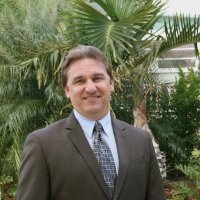
May 13, 2016 // Fully Charged Profile: Jay Barrett
 Fully Charged Workgroup: Member Profiles: April 2016: Jay Barrett
Fully Charged Workgroup: Member Profiles: April 2016: Jay Barrett
Q: Tell us about your background. How did you get into your current career field and job?
A: I was a Nuclear Field Electronics Technician in the Navy and was looking for a job when I was discharged in 1990. I applied for a tech ops job at Miami Center (ZMA) and was referred to the air traffic manager based on my service record and test scores. He hooked me up with the civil service exam for air traffic control at the time and about a year later I was a developmental at ZMA.
I transferred to Miami ATCT (MIA) in 1999 after holding various E-Board positions at ZMA and I am currently still assigned there. I have always had an interest in labor relations and have served NATCA in many different roles over the years. I have spent thousands of hours doing grievance handling and arbitrations as well as negotiations at all levels. I was a member of NATCA’s 2005 contract negotiating team and when that process ended, I went to Law School at the University of Miami and graduated in 2009.
In 2014 I was asked to serve as the fatigue liaison full time in D.C. Last year the Fatigue office was merged with the new Human Factors office in Safety and Technical Training. I worked with Jason Demagalski, the new manager, and we successfully created the Human Performance Office. I am now the NATCA National Representative for Human Performance.
Q: How did you get involved in the Fully Charged Workgroup?
A: The Fully Charged workgroup was already formed when I arrived in D.C. in 2014. As the fatigue liaison, I was asked to be a part of the group.
Q: What do you want to see changed or improved in the workplace to mitigate fatigue?
A: I would like to be able to open the workforce’s eyes to the negative effects of fatigue and help them understand that a large portion of their individual fatigue profiles are within their sphere of control. Sleep deprivation, and the follow-on result we call fatigue, have far-reaching health, performance, and safety implications. The science of fatigue was not on our radar 20 years ago and many of us have since experienced the detrimental consequences due to living with it.
Q: Of what accomplishment are you most proud?
A: If we can deliver an alertness application to the workforce that will contain functionality to inform them on an individual basis about their projected and current alertness levels, I will be very pleased.
Q: Why is Fully Charged important to the workforce?
A: I think it speaks directly to the very important topic that is personal fatigue management. No matter what schedule an employee works, they have to be able to balance the one-third of their life that requires sleep with their work life. If we can help them with that task, and inform them or provide the information that will assist them in making appropriate safety conscious life choices, then we will be successful.
Q: How do you stay Fully Charged?
A: I don’t work shift work anymore, but I have made lifestyle changes to ensure I get my seven-to-eight hours of sleep at night. Since I have done this, I have been the beneficiary of some positive health and lifestyle benefits. I actually feel a lot better everyday, so it is easy to stay fully charged and therefore, fully engaged.

